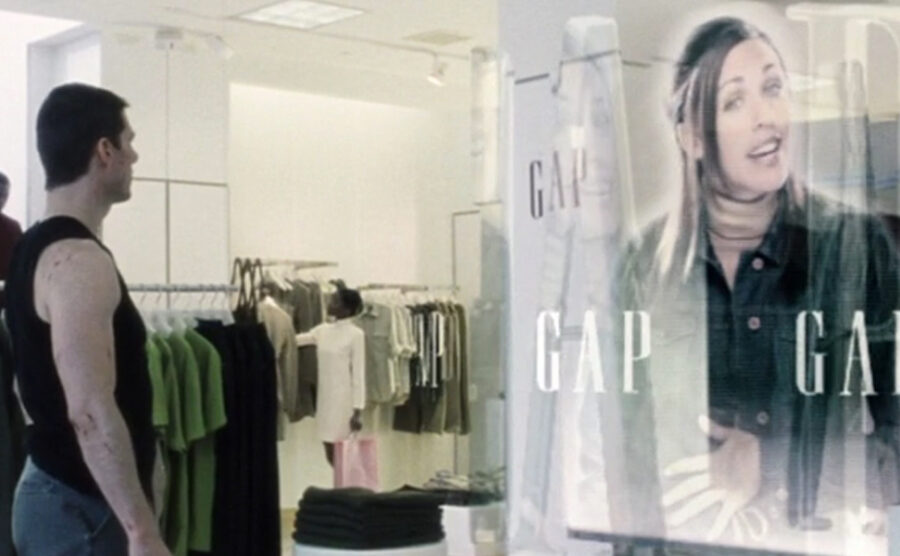Facial Recognition Search: How Much Can It Really See?
Facial recognition search technology has seen a huge advancement in the past decade.
This article is more than 2 years old

Facial recognition search technology (FRT) has been around for a while now. It has seen a huge advancement in the past decade and like those described above, from a technology standpoint, it doesn’t appear to be slowing down. This leads to the bigger question concerning facial recognition technology and its future. Are we dancing on the privacy rights of the collective citizen?
MANUALLY SPEAKING
Facial recognition search’s roots date back to the early 1960s and the man who is considered to the father of facial recognition, Woodrow Wilson Bledsoe. Bledsoe developed a system consisting of photos and a graphical computer. In it, he manually recorded the coordinates of facial features. He would take many different faces and the locations of their eyes, nose, mouth and even the hairline, inputting the locations into his computer. With all this information stored, his program would then get the closest match based on his database.
The problem at that time wasn’t his program but the lack of technological power. Computers just weren’t powerful enough in the ’60s to fully realize what Bledsoe was attempting.
NON-MANUALLY SPEAKING
The tech advancement around facial recognition search has moved steadily throughout the ’70s but it pretty much remained the manual process it had always been. It wasn’t until the late ‘80s and early ‘90s that the technology for facial recognition moved to the point where manual computation was no longer.
This is when a significant jump was made in what was known as the Eigenface approach that began as a low-dimensional representation of facial images. It was demonstrated through this approach that analyzing features on a set of images could create a basic set of features.
THE YEARLY CHALLENGE
The relentless push to make facial recognition search viable led to the ImageNet Large Scale Visual Recognition Challenge (ILSVRC). This yearly challenge was devised to test the ability of algorithms to accurately categorize images within its archive to an increasing degree of accuracy.
In the early 2010s, 25% was a “good” classification error rate. This meant a quarter of the time, facial recognition search got it wrong. But in 2012, a convolutional neural net (CNN) named AlexNet brought in a 15.3% error rate, a huge step forward for facial recognition. In 2013 the ILSVRC saw an error rate of 14.8%. 2014 it was 6.67% and in 2015 it dropped to 3.6%.
HOW DOES FACIAL RECOGNITION SEARCH WORK?
Today’s facial recognition search technology is a far cry from even the early to mid-2000s. The accuracy with which the technology can hit is mind-boggling.
Facial recognition uses measurements to create its template. It takes all the measurements of a face, turning them into landmarks, also known as nodal points. Each face has around 80 nodal points that are measured, creating a numerical code that is called a faceprint. This face print is then compared to the millions of photographs in the system. These photos are found in many various places such as government identification records, driver’s license databases, mugshots, and even social media accounts (Hello Facebook, hi there Instagram). The legality of facial recognition will be discussed a bit later.
HOW GOOD IS FACIAL RECOGNITION?
Good. Probably even better than good. Again, it all comes back to technology and the advances it’s making. The outlook for the technology has Allied Market Research estimating the facial recognition market will grow to $9.2 billion by 2022. So, with all this money being pumped into the FRT system, expect the technology to only get better.
HOW FACIAL RECOGNITION SEARCH IS USED RIGHT NOW
Ever tag a picture and post it on Facebook? Once it’s posted, a square outlines many of the faces in the picture. That’s facial recognition search technology at work.

Facial recognition search tech is used in many instances. From your cell phone to city security to social media and other online activities the list is long when it comes to facial recognition use. Here are a few:
- Law Enforcement Protection – Mobile facial recognition apps are becoming the norm for our men and women in blue. They are able to identify criminals from a safe distance while out in the field. They can find out how dangerous a suspect is and call for backup and proceed with caution.
- Unlock Cell Phones – There are a large variety of cell phones these days that use facial recognition to unlock their screens. It’s a useful security measure to protect personal information should one’s phone go missing.
- Retail Crime Prevention – There has been a recent uptick in retail crime, especially those coordinated retail criminals who like to walk into an establishment as a group and do their damage. In this case, facial recognition is being used instantly when known criminals enter a store as it alerts retail security professionals who hopefully are able to prevent a theft or worse.
- Advertising The Smart Way – Facial recognition tech is being used to make an “educated guess” at people’s age and gender in better efforts to direct age/gender-specific ads their way. Facial recognition is already being seen in some gas stations so while you fill up, specific ads will play on the pump for you.
- Missing Persons – Facial recognition technology is being used to combat and find missing children and victims of human trafficking. Amazingly enough, in a four-day time span, over 3,000 missing children were discovered using facial recognition in India.
- Forensic Investigation – Facial recognition can help forensic investigators identify dead or unconscious people at a crime scene.
- Protecting Schools – Facial recognition has the ability to recognize kids who have been expelled or suspended, violent parents, drug dealers or any other person who may pose a threat to the school.
- Casinos – Someone is always trying to take the house. Well the house has one more way of stopping you. Facial recognition is able to identify the cheater as they enter the casino.
- Smart Billboards – They are already out there, but don’t be surprised if one day in the near future you walk into a retail store to be greeted by a smart billboard with suggestions of what to buy, where to find it and even deals you can get all simply based on your photo.
IS FACIAL RECOGNITION TOO INVASIVE?
This is where the debate begins. Having proven time and time again just how valuable facial recognition searches can be, there comes the flip side. How much is too much?

We love the security of facial recognition tech but the invasion of privacy is something many can’t stand for. In fact, a few cities across the United States are already banning the use of facial recognition technology. San Francisco led the way with the first ban of facial recognition technology and its East Bay neighbor Oakland soon followed. Then Somerville and Brookline in Massachusetts joined in and there is talk that the entire state of Massachusetts will follow.
So where do you stand on privacy versus safety? Is safety overrated? Perhaps the concern isn’t regarding the safety aspect of what facial recognition search is trying to accomplish, but what all the companies involved are doing with our personal information. It is well known the security breaches many of these large data collecting companies have endured. Many other large companies, who shall remain nameless, sell the information they collect. Facial recognition search is used to track consumers, their buying habits, their eating habits, their traveling habits and whatever other habit will turn a buck.
This debate appears it will continue for a while. With as much money that is being spent on the technology, facial recognition will continue, it’s just not known how far-reaching it will be able to go.
THE FUTURE
There is a huge future for facial recognition search technology. A $9.2 billion future. Cameras are everywhere. In our streets, in our cities, sports facilities, you name it. We even help populate the databases with our overuse of social media. It’s hard to cry privacy when we are doing a lot of the legwork for these companies who wish to use their Facial Recognition Technology.
The United States is not alone when it comes to facial recognition search use. China and India are major players but their outlook on citizens’ privacy differs greatly from those of us in the United States. In fact, there are many across the globe who won’t bat an eye when it comes to their population’s security. But both China and India are using facial recognition to great effect and their results are hard to argue with.
With the many aspects of personal and professional lives and businesses in the crosshairs of those who wish harm (physical or financial) upon them, facial recognition search won’t leave our lives any time soon.












